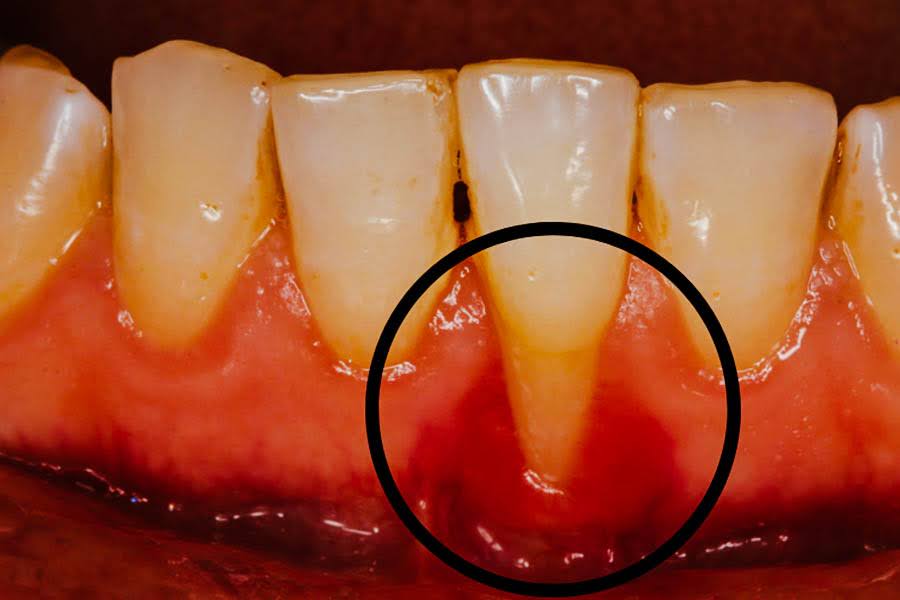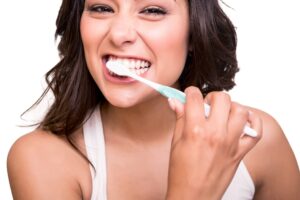Gum Recession

The term "gingival recession" (also known as "receding gums") describes the gradual loss of gum tissue, which, if left untreated, might eventually expose the tooth root. Although it can start in adolescence, gum recession is most prevalent in individuals over the age of 40.
The early stages of gum recession might be challenging to self-diagnose because the changes frequently take place gradually and asymptomatically. Gum recession can be avoided with routine dental exams that also identify risk factors.
Gum recession may be indicated by the following symptoms:
- Sensitive teeth: The dentin tubules beneath will become more sensitive to outside stimuli as the gums recede far enough to reveal the cementum encasing the tooth root
- One of the key indicators of a more severe case of gum recession is the presence of visible roots, teeth that appear longer. People who suffer from gingival recession frequently have a "toothy" smile.
- The teeth's length is entirely normal, but because the gum tissue has receded, the teeth appear longer than they actually are hemorrhage, inflammation, and halitosis
These signs and symptoms are recognized as periodontal disease or gingivitis. If a bacterial infection is not properly treated, the gums will begin to pull away from the teeth, which could result in tooth loss.
Gum Recession Factors
Dental professionals regularly identify and treat gum recession, which is a very common issue. It's crucial to do a thorough examination of the afflicted areas and identify the true cause of the issue. Once the reason for the gum recession has been identified, both surgical and nonsurgical methods can be used to stop the recession in its tracks and prevent it from happening again.
The following are the leading causes of gingival recession:
Overly forceful brushing: Overbrushing can be equally bad for the gums as not brushing enough. Too much force when brushing or using a toothbrush with a strong bristle can erode tooth enamel near the gum line and irritate or inflame the gum tissue.
Poor oral hygiene: Plaque can start to harm the teeth when brushing and flossing are done incorrectly or not at all. Numerous bacterial toxins found in the plaque have the potential to cause infection and destroy the jawbone beneath.
Chewing tobacco: The oral cavity as a whole suffers greatly from any tobacco use. Particularly when done repeatedly, chewing tobacco irritates the gingival lining of the mouth and promotes gum recession.
Periodontal disease: Systemic disorders like diabetes or poor dental hygiene can also contribute to periodontal disease. Oral bacteria thrive in an environment that is ideal for them because of the extra sugars in people with diabetes' mouths and their restricted blood vessels. The bacterium produces an infection that spreads ever further into the bone and gum tissues, ultimately leading to tooth loss.
How to treat gum recession
There are numerous therapies for gum recession because each case is slightly unique. It is first necessary to address the nature of the issue that led to the recession.
A softer toothbrush and a gentler brushing approach should be utilized if extremely harsh brushing methods are damaging the gums. Prophylaxis (professional dental cleaning) may be advised to clear the gum pockets of debris and bacteria if poor oral hygiene is an issue. Scaling and root planing will be done to clean the teeth and treat gingival inflammation in cases of significant calculus (tartar) buildup.
Surgery that is more aesthetic or restorative in character may be advised once the cause of the gingival recession has been treated. Gum tissue regeneration and gum grafting are two superb methods for restoring the gums' natural symmetry and improving the appearance of the smile.
Ask your dentist if you have any questions or concerns concerning gum recession, periodontal disease, or periodontal treatments.







